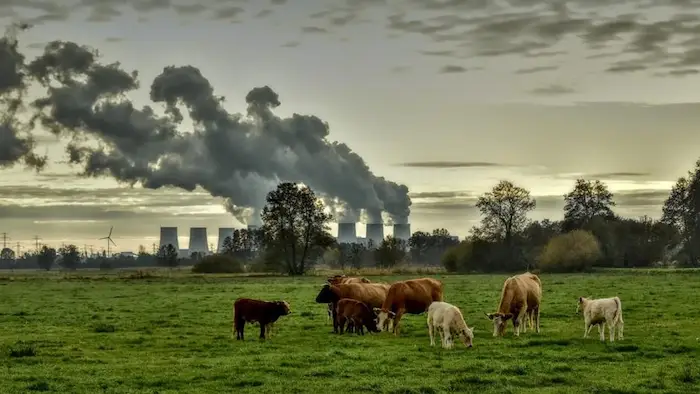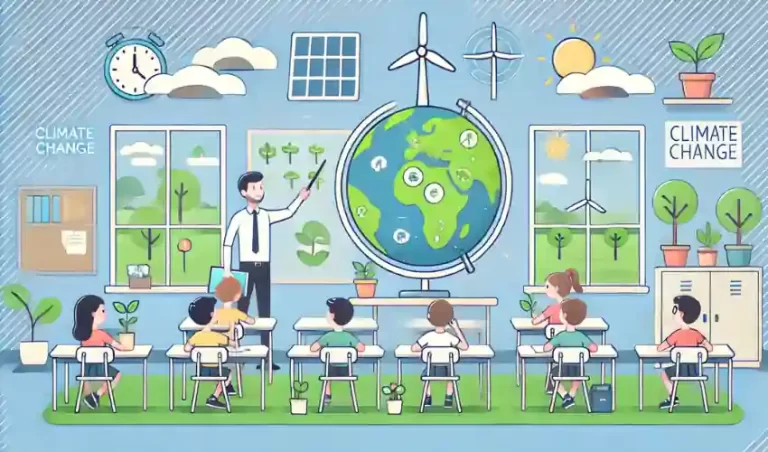Methane Emissions In The Spotlight: Climate Impact Explained
Methane (CH₄) is a greenhouse gas with significant impact on global warming.
While it doesn’t linger in the atmosphere as long as carbon dioxide (CO₂), its heat-trapping ability is far greater. This makes methane emissions a pressing concern, demanding immediate attention.
Here’s our overview of the key details around Methane, the role it plays in climate change and solutions to curb it’s impact.
The Source of the Problem: Where Does Methane Come From?

Global methane emissions stem from both human activities and natural causes (broadly 40% human activities, 40% natural). Here’s a breakdown of the main culprits:
Agriculture (24%):
Livestock, particularly ruminant animals like cows and sheep, belch methane as part of their digestive process. Manure storage and rice cultivation also contribute.
Fossil Fuels for Energy (22%):
Leaks from oil and gas wells, pipelines, and infrastructure during extraction, processing, and transportation release methane into the atmosphere.

Waste (12%):
Landfills decompose organic waste anaerobically (without oxygen), producing methane. Wastewater treatment plants also contribute.
Biomass Burning (2%):
Biomass burning emissions mainly result from human induced burning of land for ground clearance.
Natural Sources (40%):
These sources include release from wetlands and permafrost, as well as from geological processes, wild animals and naturally occurring wildfires.
The Role of Methane in Climate Change

Methane’s impact on climate change is significant, despite its shorter lifespan in the atmosphere compared to Carbon Dioxide (CO2):
A Potent Greenhouse Gas: Methane is over 25 times more effective than CO2 at trapping heat. This means a smaller amount of methane can have a substantial warming effect. See our comparison against other gases here.
Emissions Continue to Rise: Methane emissions are rising at an alarming rate, having increased over 30% since 1990. This rapid increase contributes significantly to near-term global warming, heightening risk of hitting Climate Tipping Points.

Given these factors, addressing methane offers a critical opportunity to slow down the pace of climate change.
By taking swift action, we can reduce the worst effects of global warming near term, buying us more time to act on CO2 emissions and adapt to the level of climate change CO2 emissions will eventually lead to.
Strategies for Reducing Methane Emissions

Fortunately, there are ways to tackle this challenge. Here are some key approaches:
Agriculture
Emissions from livestock can be reduced by Improved feed management, dietary additives, and breeding programs for lower-methane emitting breeds. Advancing manure processing technologies can also significantly reduce emissions.
It is also worth noting that the debate on red-meat consumption and climate change links to methane.
Actions to reduce livestock emissions can increase meat costs. Support these improvements by purchasing the higher quality meat over cheaper versions in effect` supports methane reduction. As of course does simply reducing overall meat consumption.
Fossil Fuels
In regards to continued fossil fuel use, enhanced leak detection and repair programs are key. Transitioning to cleaner technology for processing natural gas, and improved pipeline infrastructure would also be valuable steps.

More fundamentally, eventual transition away from fossil fuels towards green energy sources, such as renewables, green hydrogen and nuclear, will eliminate fossil fuels as a methane source.
For individuals and businesses, this is where you can most effectively support action to reduce Methane. Switch to a renewable tariff for your energy and you’ll be helping to speed up the transition away from fossil fuels.
Waste
Methods are available to capture Methane from landfills (some are easier to tackle than others). This in turn means the captured Methane can be harnessed as an energy source.
Further role out of anaerobic digestion plants can also help reduce landfill sources. These plants convert organic material that would potentially be destined for landfill waste into biogas, a green energy source.
Enhanced Monitoring
Satellite technology is allowing for better detection and quantification of methane emissions from various sources. This in turn allows for improved action and focusing of investment
Collaborative initiatives are able to make use of enhanced monitoring to foster collaborative action. The Global Methane Pledge is one such example. Lunch in 2021 under COP26, this initiative aims to reduce global methane emissions by 30% by 2030, compared to 2020 levels.
Methane: An Ongoing Concern

Methane emissions are a pressing concern, but not an insurmountable one.
By implementing targeted strategies to monitor and reduce emissions from agriculture, fossil fuel use, and waste management, we can significantly lessen the impact on our climate.
This carries through to the consumer level, with support from businesses and individuals needed for lower emissions agricultural products and energy tariffs.
Broad cooperation and technological advancements are essential if progress is to be made at pace. There seems to be growing acknowledge and actions to enable these advancements, however this is yet to show through into actual emission reductions.
If current action can advance into real reductions, then we will most certainly create a more sustainable future for our planet. Fail to do so and we risk some of the worst climate impacts we want to avoid.







